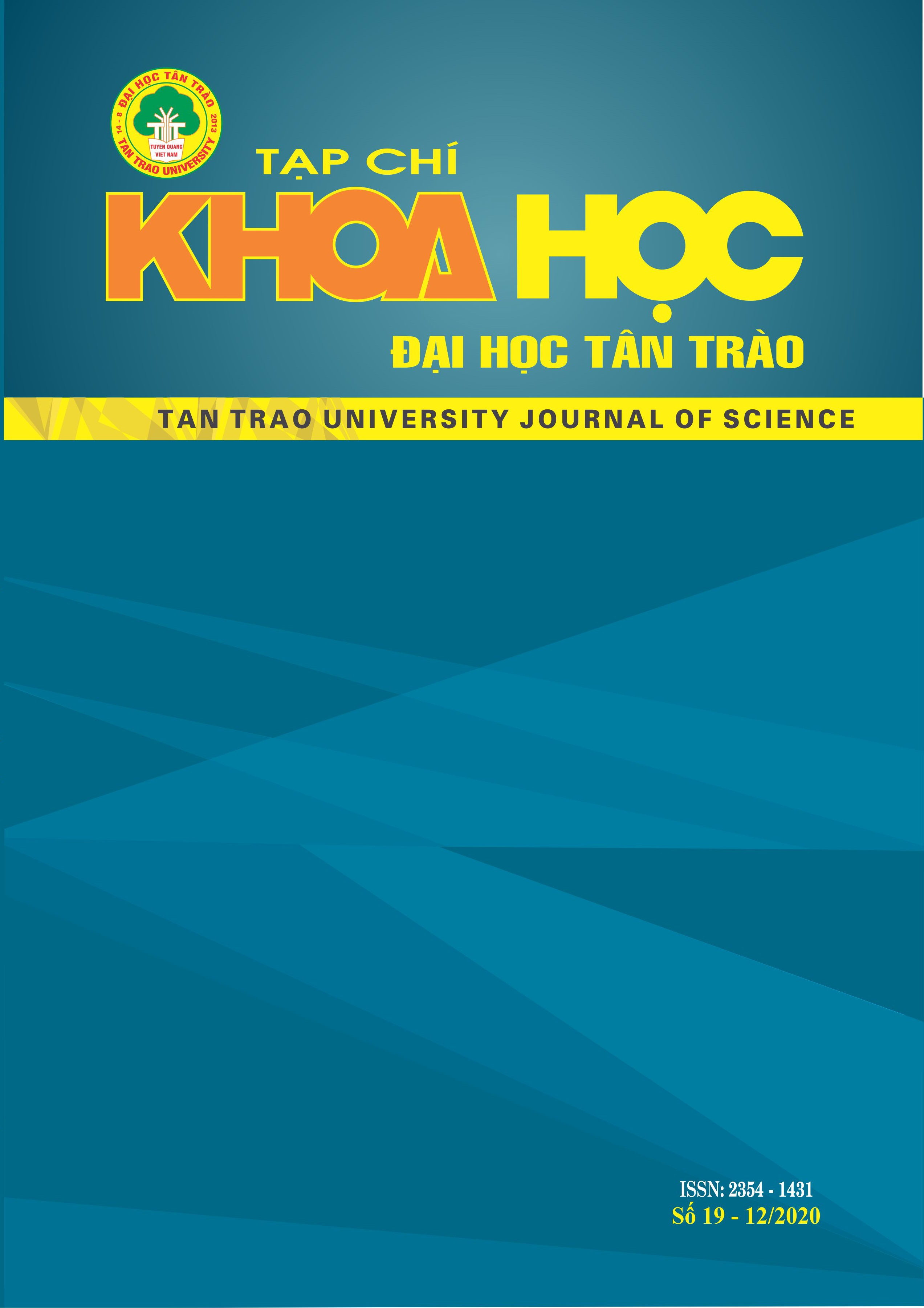QUẢNG BÁ ĐIỂM ĐẾN DU LỊCH QUA PHIM TRUYỀN HÌNH THÁI LAN
DOI:
https://doi.org/10.51453/2354-1431/2020/438Từ khóa:
Du lịch, phim cảm ứng du lịch, phim truyá»n hìnhTóm tắt
Du lịch có tác động lớn đến các nền kinh tế quốc gia. Ngành công nghiệp này đã được sử dụng như một công cụ để tăng tổng sản phẩm quốc nội của nhiều chính phủ. Gần đây, việc thông qua các bộ phim để quáng bá du lịch đã trở thành một xu hướng rất phổ biến. Tuy nhiên, lĩnh vực nghiên cứu này có thể được coi là một mô hình mới trong số các học giả về Du lịch và Khách sạn Thái Lan. Do đó, trong bài viết này, tác giả tìm hiểu và thảo luận về loại hình du lịch này. Mục đích chính của nghiên cứu này tập trung vào cách các bộ phim truyền hình và phim truyền hình Thái Lan có thể được sử dụng để quảng bá các điểm đến du lịch ở vùng Đông Bắc, Thái Lan. Kể từ Nakhi, một bộ phim truyền hình nổi tiếng năm 2016 và Nakhi 2, bộ phim được sản xuất năm 2018 đã được thực hiện ở các địa điểm Đông Bắc, bài viết này mô tả các hiệu ứng suy đoán của cả hai hình ảnh chuyển động về kinh doanh du lịch của khu vực. Hướng dẫn về việc sử dụng ảnh hưởng của bộ phim để quảng bá du lịch cũng được đưa ra.
Tải xuống
Tài liệu tham khảo
1. Richter, K. (2006). Thailand: Northeast and Economic Development. Presented to World Bank and NESDB on Management of Regional and Spatial Development, 26 October, Bangkok, Thailand. International Medical Travel Journal. 2018: Unpaged
2. Huttasin, N., Mommaas. J. T. & Knippenberg, L. (2015). Towards tourism development of the Isan region, Northeast, Thailand. International Journal of Asia Pacific Studies. 11(Supplement 1), 103-128.
3. Higham, J. (2000. Thailand: Prospects for a tourism-led economic recovery. In Tourism in South and Southeast Asia: Issues and Cases, ed. Hall, C.M.. and Pages, S., 129-143. Oxford: Butterworth and Heinemann.Highlighted Festivals in Northeast (Isan). (2018).
4. Rewtrakunphaiboon, W. (2008). “Film-induced tourism: Inventing a vacation to a location.” BU Academic Review. 8(1), 33-42. (2017). An exploratory research on perceived destination attractiveness from viewing Korean film of Thai private university students: A case study of Bangkok/ University. BU Academic Review. 16(1), 115-128.
5. Kittiasa, P. (2003). Localism. Bangkok: O.S. Printing House.
6. Pool, A.L. (2006). Factors influencing international tourists in choosing a travel destination: A case study of Penang, Malaysia (Thesis, University of Sains Malaysia School of Housing, Building & Planning).
7. Wijit, I. (2016). Communications of identities to promote the tourism of Buriram province. (Thesis, Mass Communication Journalism, Thammasat University).
8. Kim, S., & Nam, C. (2016). Halluyu revisited: Challenges and opportunities for South Korean tourism. Asia Pacific Journal of Tourism Research, 21(5), 524-540.
Tải xuống
Đã Xuất bản
Cách trích dẫn
Số
Chuyên mục
Giấy phép

Tác phẩm này được cấp phép theo Giấy phép Quốc tế Creative Commons Attribution-ShareAlike 4.0 .
Bài báo được xuất bản ở Tạp chí Khoa học Đại học Tân Trào được cấp phép theo giấy phép Ghi công - Chia sẻ tương tự 4.0 Quốc tế (CC BY-SA). Theo đó, các tác giả khác có thể sao chép, chuyển đổi hay phân phối lại các bài báo này với mục đích hợp pháp trên mọi phương tiện, với điều kiện họ trích dẫn tác giả, Tạp chí Khoa học Đại học Tân Trào và đường link đến bản quyền; nêu rõ các thay đổi đã thực hiện và các nghiên cứu đăng lại được tiến hành theo cùng một bản quyền.
Bản quyền bài báo thuộc về các tác giả, không hạn chế số lượng. Tạp chí Khoa học Tân Trào được cấp giấy phép không độc quyền để xuất bản bài báo với tư cách nhà xuất bản nguồn, kèm theo quyền thương mại để in các bài báo cung cấp cho các thư viện và cá nhân.
Mặc dù các điều khoản của giấy phép CC BY-SA không dành cho các tác giả (với tư cách là người giữ bản quyền của bài báo, họ không bị hạn chế về quyền hạn), khi gửi bài tới Tạp chí Khoa học Đại học Tân Trào, tác giả cần đáp ứng quyền của độc giả, và cần cấp quyền cho bên thứ 3 sử dụng bài báo của họ trong phạm vi của giấy phép.






